In the US, under certain conditions you can get away with not having to select an alternate – as long as both ends of one runway are suitable and available, you have two runways. In Europe, there’s a similar rule, but the key difference is that there has to be separate runways – not one runway which you could land at either end of.
EASA recently issued this reminder letter to Third Country Operators:
For a flight to be conducted in accordance with the instrument flight rules, at least one destination alternate aerodrome shall be selected and specified in the operational and ATS flight plans, unless the duration of the flight from the departure aerodrome, or from the point of in-flight re-planning to the destination aerodrome is such that, taking into account all meteorological conditions and operational information relevant to the flight, at the estimated time of use, a reasonable certainty exists that:
1. the approach and landing may be made under visual meteorological conditions (VMC); and
2. separate runways are usable at the estimated time of use of the destination aerodrome with at least one runway having an operational instrument approach procedure.
In accordance with the ICAO definition, separate runways are two or more runways at the same aerodrome configured such that if one runway is closed, operations to the other runway(s) can be conducted.
Several ICAO contracting States have filed a difference to ICAO with regard to this standard, because their national regulation does not contain a requirement for separate runways at the destination aerodrome when opting to file a flight plan without a dedicated destination alternate aerodrome.
Please be informed that EASA expects TCOs to plan their flights in compliance with the ICAO standard. This means that an alternate aerodrome has to be listed in the ATS flight plan where required in accordance with standard 4.3.4.3.1 of Annex 6 Part 1 to the Chicago Convention, even though your national regulation is less restrictive in this aspect.
The respective destination alternate fuel shall be included in the pre-flight calculation of usable fuel in accordance with standard 4.3.6.3 of said Annex.
EASA will verify compliance by means of sampling flight documents during the initial authorisation and during continuous monitoring of TCO authorisation holders.
Furthermore, ramp inspections performed under SAFA/RAMP inspection programme will serve as an additional source of information for non-compliance.
Where a non-compliance is found, EASA will raise a level-2 finding in accordance with Part-ART of the TCO Regulation (EU) No 452/2014.
We therefore, encourage you to review your flight planning procedures and where necessary to align those to ensure full compliance with the respective above-mentioned standards.
So can I plan a flight in Europe without an alternate?
Yes, but only in certain circumstances. EASA CAT.OP.MPA.182 has the details:
Or if you want to keep it simple, just file an alternate airport in your flight plan.
A Cautionary Tale
Here’s a recent report from an OPSGROUP member on this:
We were doing flights all over the EU without an alternate, when the weather didn’t require one as per our rules. Then we got SAFA ramp checked in EGSS/Stansted, and the ramp inspector took umbrage that we were coming in without an alternate on a clear day. We now carry an alternate for all single runway ops in the EU, with a realistic routing.
A Realistic Routing?
This is another thing to watch out for in Europe. You have to make sure your route to alternate is computed and included in your flight plan, that it’s realistic, and that it doesn’t break any rules. Let’s tackle those in order:
Computed and included in your flight plan:
It should look something like this:
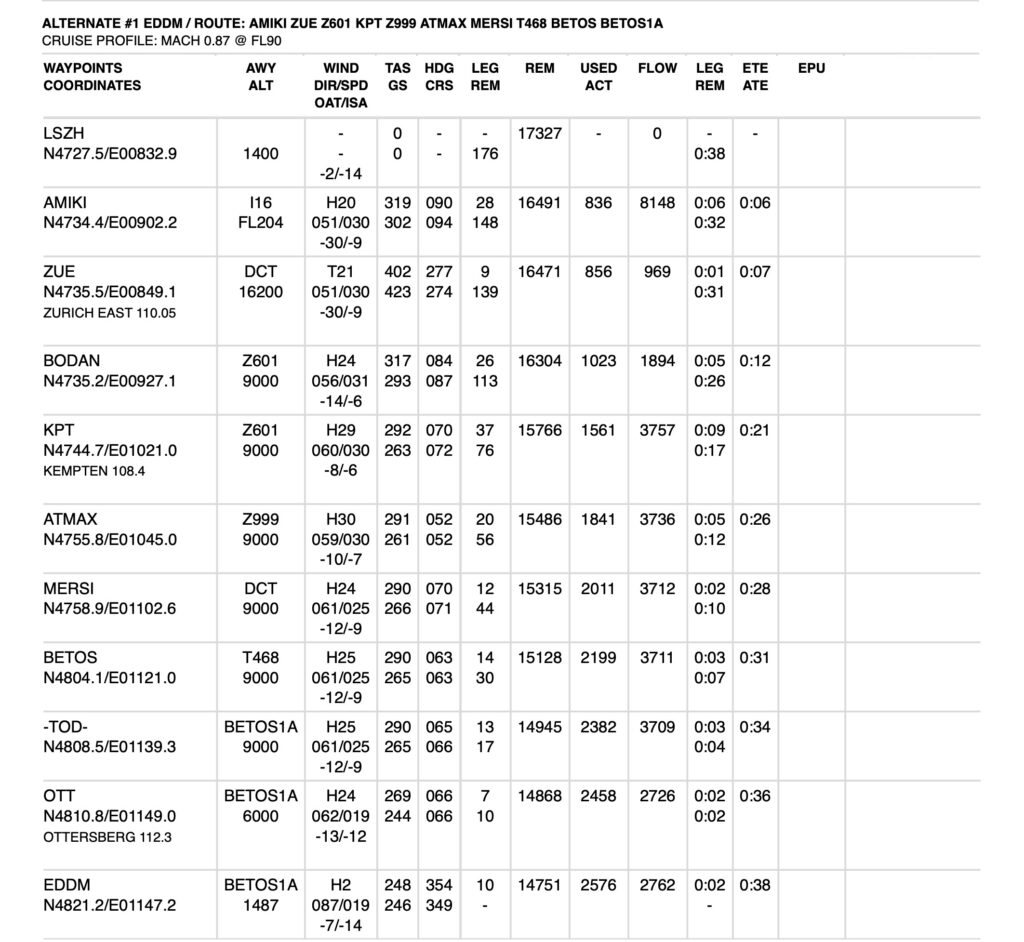
Realistic:
This means you’ve included a proper route to alternate like the one shown above, not just one big DCT. The routing doesn’t have to be fully Eurocontrol compliant, it just has to be realistic. That means making sure you have enough fuel for a missed approach, climb, and descent to alternate. If you use a SID from your destination airport and join it up with a STAR for your alternate, that’s probably a safe bet.
Doesn’t break any rules:
The French DSAC recently partnered up with IS-BAO to take a look at hundreds of de-identified ramp check findings in order to analyse the most frequent CAT 2 and CAT 3 findings in business aviation. A common one was flights planned to unavailable alternates – usually those that cannot be used as per AIP or Notam, or those where you need PPR.
Common ones to watch out for:
LFTH/Toulon – can’t be used as alternate without PPR.
LFMD/Cannes – can’t be used as alternate except for flights to LFTZ/La Mole.
LFMQ/Le Castellet – this sometimes gets used as an alternate for LFMN/Nice and LFML/Marseille. But LFMQ rarely publishes TAF/METAR reports, so if you want to use this, you need to make sure you select at least one other alternate with a weather report!
Do you know of any more? Let us know!
More info
Head here to download the latest ramp check guidance straight from the horse’s mouth.
More on the topic:
- More: Ops to Europe: How to Get a Third Country Operator (TCO) Approval
- More: EASA Removes CZIBs: Middle East Risk Gets Harder to Read
- More: Why EASA has Withdrawn Airspace Warnings for Iran and Israel
- More: Russia: Aircraft Shot Down, New EASA Airspace Warning
- More: SAFA Ramp Checks: The Top 5 Offenders (+Alcohol test)
More reading:
- Latest: More face scans at the US border for BizAv flights
- Latest: Greenland NAT Alternates: Dec 2025 Update
- Latest: Mexico Customs Surprises: Pills, Vapes, and Laptop Rules
- Safe Airspace: Risk Database
- Weekly Ops Bulletin: Subscribe
- Membership plans: Why join OPSGROUP?



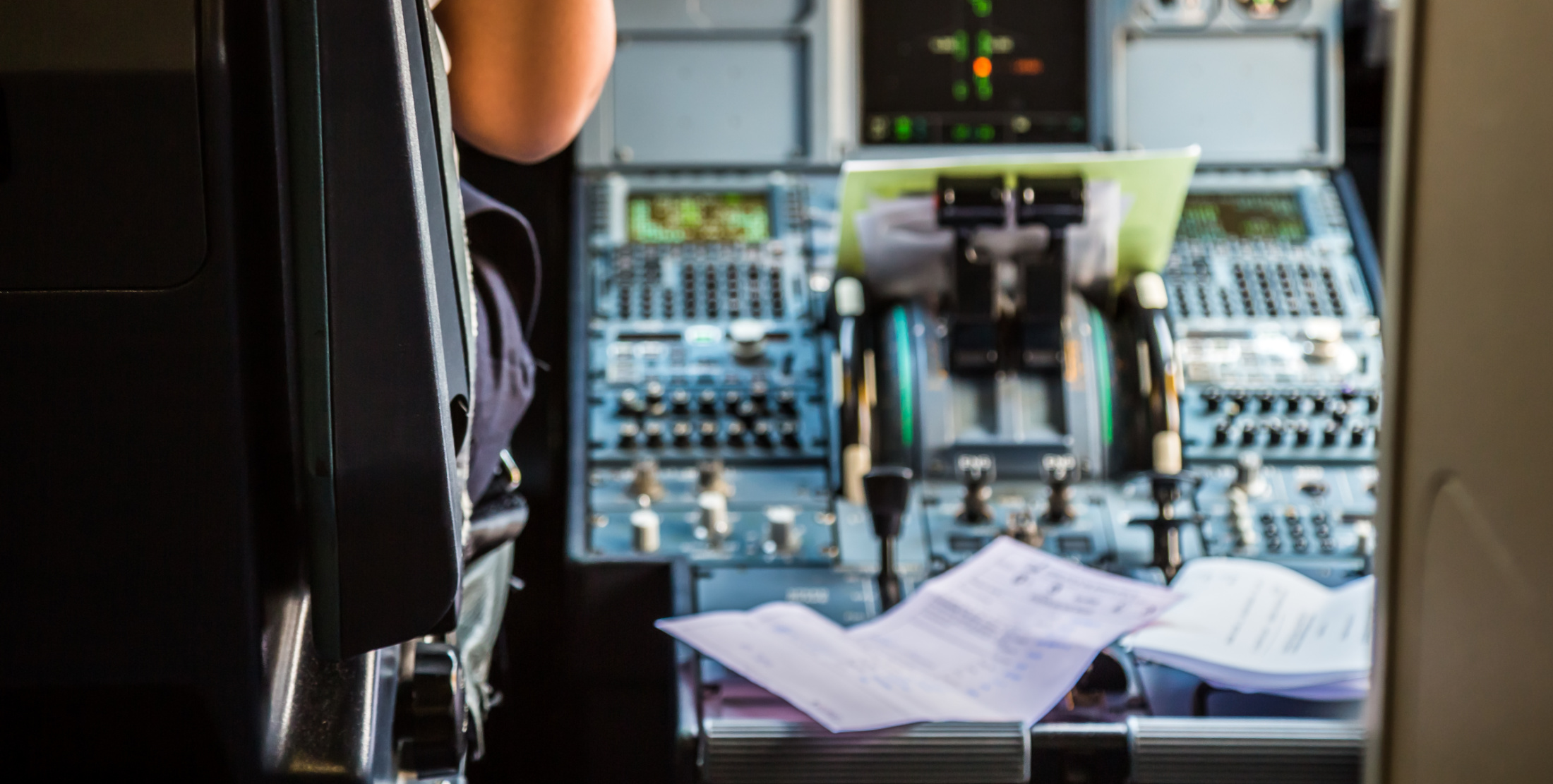
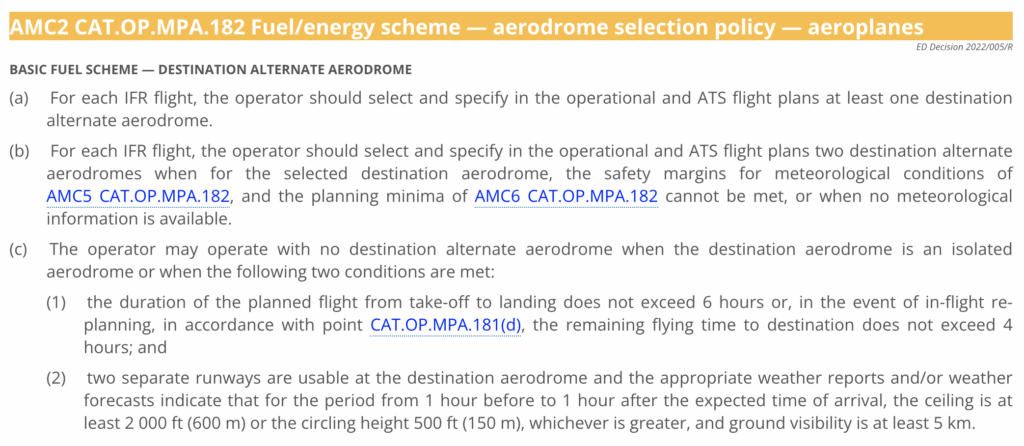
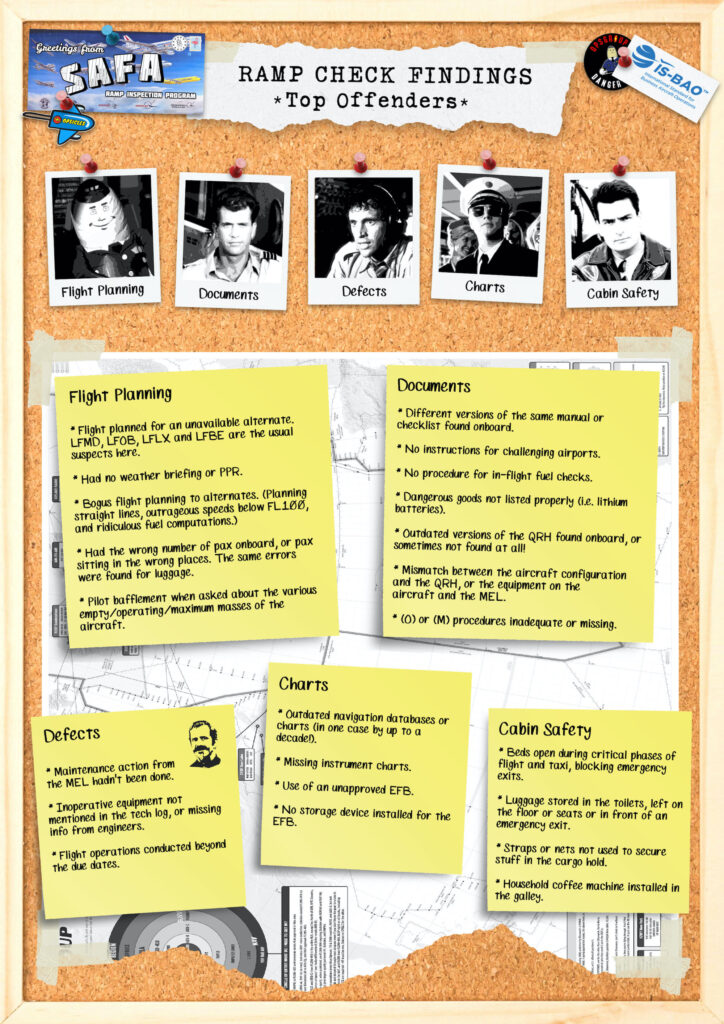







 Get the famous weekly
Get the famous weekly 



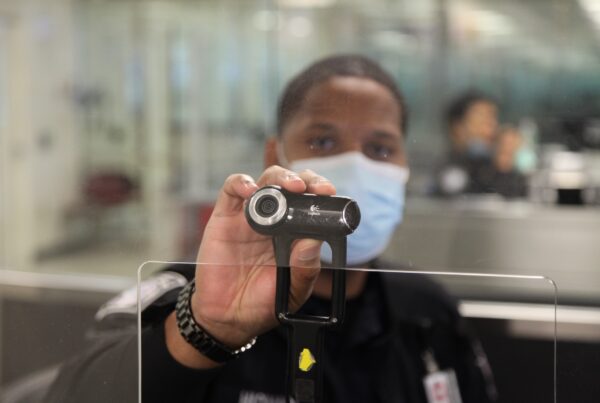


What if this happens:
*Flight A to B diverts to C.
*Airline then files C to B with destination alternate A.
*Weather remains below minima at B.
*Flight B to A is a 2 hour flight.
In other words, does the law, or any other source like EASA, also apply the ‘realistic’-part to the distance of a destination alternate? (In the above there would not be any destination alternate at A on the second flight)
Regards
In the US you are not “getting away” with anything when u file No Alternate. With world wide weather at most airports being better than No Altn minima some 85% of the year why carry the Alternate and burn all that additional fuel to carry it. In the US some 75% plus of all air carrier operations plan and fly with no designated alternate.
Can you clarify your first sentence…
“In the US, under certain conditions you can get away with not having to select an alternate – as long as both ends of one runway are suitable and available, you have two runways.”
First you can get away without “filing” an “alternate”, but you cannot get away with not considering an alternative. Regulations specifically provide weather conditions, that if not met, require “filing” an alternate, but regulation regarding preflight planning specifically state you must consider “alternatives available if the planned flight cannot be completed”. Thus, there are conditions in which you are not required to “file” an alternate, but you certainly may have to plan for one. Yes, it is a technical difference, but an important one when your destination does not require a “filed” alternate but your nearest alternative is not near the destination.
The 2nd part of “as long as both ends of one runway are suitable and available, you have two runways.” has no basis in US regulations. In the US the determination whether you must “file” an alternate is strictly based on the airport having an available IAP and the forecast ceiling/visibility exceeding the regulatory criteria. I believe you are confusing the US requirements as to whether or not an alternate must be filed, with typical US ops spec criteria for determining alternate minimums.
Regards
Dear Opgroup team,
thank You for Your ops bulletin “Flight Plan Alternates In Europe”.
Please allow me to note that it might also be worth mentioning, that if You plan without an Alternate airport, it is not sufficient to only check the fulfillment of the requirements according the mentioned “CAT.OP.MPA.182” (WX, flight time, etc).
It is also required to apply the fuel planning according “CAT.OP. MPA.181 (c)(4)(ii)”, which – in very simple terms – requires 45 min final reserve fuel instead of 30 minutes (if operated according CAT):
“when a flight is operated with no destination alternate aerodrome, it shall be the
amount of fuel/energy required to hold at the destination aerodrome, while
enabling the aeroplane to perform a safe landing, and to allow for deviations from
the planned operation; as a minimum, this amount shall be 15-minute fuel/energy
at holding speed at 1 500ft (450 m) above the aerodrome elevation in standard
conditions, calculated according to the estimated aeroplane mass on arrival at the
destination aerodrome;”
Best Regards